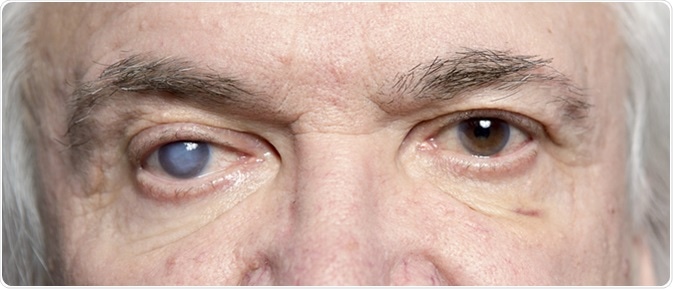About one-third of all contact wearersTrusted Source fall asleep with their lenses in, and most wake up with nothing more serious than a little dryness they can blink away with a few eye drops. Some contacts are even FDA-approved for sleep.


About one-third of all contact wearersTrusted Source fall asleep with their lenses in, and most wake up with nothing more serious than a little dryness they can blink away with a few eye drops. Some contacts are even FDA-approved for sleep.

Glaucoma is the second greatest factor leading to permanent blindness in the United States. The aqueous humor is a water-like fluid that occupies the anterior chamber of the eye where the pupil, lens, iris, and cornea are located.
The fluid provides the eye with nutrients and the necessary pressure to help maintain the shape of the eye, known as intraocular pressure (IOP). Glaucoma is generally caused by an increase in IOP, which subsequently damages the nerve fibers of the retina and the optic nerve.

The development of glaucoma can be asymptomatic as the condition tends to progress gradually. However, in some cases, the condition can progress rapidly, causing the following symptoms:
Individuals from Asian, African or Caribbean backgrounds are at more risk of developing the condition as well as those whose parents or siblings have also be diagnosed with the condition. Furthermore, the prevalence of glaucoma typically increases with age and is more common amongst individuals with long-sightedness or short-sightedness, and with medical conditions such as diabetes.
Cataracts are characterized by cloudy patches of the eye’s lens. As the condition progresses, the patching typically increases in size resulting in misty or blurry vision and potentially, blindness. The condition is usually seen in both eyes. However, the rate of progression may differ between eyes, meaning a cataract may not develop in both eyes at the same time.
Common symptoms of a cataract include:
Pain may be experienced if the cataract is in an advanced stage of progression, or if there is another comorbid ocular condition.
Like glaucoma, cataracts are commonly found in older adults. However, they may be seen in young children or babies. Other risk factors include parents or siblings being diagnosed with the condition, prolonged use of steroids, smoking, excessive drinking, and medical conditions such as diabetes.
Diabetic retinopathy is a complication of diabetes. The condition develops as a result of high levels of blood sugar which damages the retina. If left untreated or if not diagnosed, it can result in blindness.
Early-stage diabetic retinopathy tends to be asymptomatic. Early signs of the condition can be detected through routine eye tests.
Those with type 1 and type 2 diabetes are at risk of diabetic retinopathy. However, specific risk factors may increase the likelihood of developing the condition, including:
Myopia (short-sightedness) and hyperopia (long-sightedness) are common refractive errors. Individuals diagnosed with myopia often have difficulty viewing distant objects.
Distant objects appear blurred. In contrast, those with hyperopia can see these objects, yet, close objects appear blurry. Both conditions can range in severity and are common in both adults and children.
Refractive errors can cause headaches, squinting due to eyestrain, dual vision and seeing halos around bright lights.
Myopia tends to run in families. Therefore, you’re at risk of developing the condition if one or both of your parents are short-sighted. Further risk factors include spending prolonged periods focusing on close objects such as reading and not spending enough time outdoors.
Hyperopia is considered a heritable condition and is more prevalent as you age.
Blepharitis is characterized by inflammation of the eyelid causing red, itchy, swollen eyelids. It can range in severity from acute to chronic, with the chronic type being the most prevalent.
The condition is generally caused by infections such as the Herpes simplex or skin conditions such as atopic dermatitis which result in flaking and crusting of the eyelashes.
Those with blepharitis often have the following symptoms:
Those with poor eyelid hygiene, sensitivity to chemicals found in make-up, and preexisting skin conditions seborrheic dermatitis and rosacea are most likely to develop blepharitis.
Age-related macular degeneration (AMD) is a common ocular condition affecting the middle section of vision typically found in those aged between 50 and 60 years old. Unlike most other eye diseases, AMD does not usually lead to total blindness. Instead, AMD may impair an individual’s ability to recognize faces and read.
The condition occurs due to natural aging which damages the clarity of vision. There are two types of AMD; wet AMD and dry AMD.
Common symptoms experienced include:
A routine eye test can often pick up AMD before being symptomatic.
Those who smoke regularly or have medical conditions such as heart disease, hypertension are most at risk of developing age-related macular degeneration.
Updated on 30th March 2020 by Chloe Bennett
Last Updated: Mar 30, 2020

If you have ever been interested in the way that your eyes. Suspendisse potenti. Fusce libero velit, tristique eu mauris vitae, convallis facilisis sapien. Mauris urna diam, fringilla sit amet eleifend id, commodo ac lorem. Curabitur at erat justo. Curabitur dapibus hendrerit dui, vel sagittis lectus laoreet et. Cras vitae purus dictum, fringilla urna sit amet, elementum leo. Etiam blandit enim eu arcu blandit sagittis. Aliquam ligula mi, luctus ut est non.

If you have ever been interested in the way that your eyes. Suspendisse potenti. Fusce libero velit, tristique eu mauris vitae, convallis facilisis sapien. Mauris urna diam, fringilla sit amet eleifend id, commodo ac lorem. Curabitur at erat justo. Curabitur dapibus hendrerit dui, vel sagittis lectus laoreet et. Cras vitae purus dictum, fringilla urna sit amet, elementum leo. Etiam blandit enim eu arcu blandit sagittis. Aliquam ligula mi, luctus ut est non.

If you have ever been interested in the way that your eyes. Suspendisse potenti. Fusce libero velit, tristique eu mauris vitae, convallis facilisis sapien. Mauris urna diam, fringilla sit amet eleifend id, commodo ac lorem. Curabitur at erat justo. Curabitur dapibus hendrerit dui, vel sagittis lectus laoreet et. Cras vitae purus dictum, fringilla urna sit amet, elementum leo. Etiam blandit enim eu arcu blandit sagittis. Aliquam ligula mi, luctus ut est non.

If you have ever been interested in the way that your eyes. Suspendisse potenti. Fusce libero velit, tristique eu mauris vitae, convallis facilisis sapien. Mauris urna diam, fringilla sit amet eleifend id, commodo ac lorem. Curabitur at erat justo. Curabitur dapibus hendrerit dui, vel sagittis lectus laoreet et. Cras vitae purus dictum, fringilla urna sit amet, elementum leo. Etiam blandit enim eu arcu blandit sagittis. Aliquam ligula mi, luctus ut est non.
If you have ever been interested in the way that your eyes. Suspendisse potenti. Fusce libero velit, tristique eu mauris vitae, convallis facilisis sapien. Mauris urna diam, fringilla sit amet eleifend id, commodo ac lorem. Curabitur at erat justo. Curabitur dapibus hendrerit dui, vel sagittis lectus laoreet et. Cras vitae purus dictum, fringilla urna sit amet, elementum leo. Etiam blandit enim eu arcu blandit sagittis. Aliquam ligula mi, luctus ut est non.

If you have ever been interested in the way that your eyes. Suspendisse potenti. Fusce libero velit, tristique eu mauris vitae, convallis facilisis sapien. Mauris urna diam, fringilla sit amet eleifend id, commodo ac lorem. Curabitur at erat justo. Curabitur dapibus hendrerit dui, vel sagittis lectus laoreet et. Cras vitae purus dictum, fringilla urna sit amet, elementum leo. Etiam blandit enim eu arcu blandit sagittis. Aliquam ligula mi, luctus ut est non.
If you have ever been interested in the way that your eyes. Suspendisse potenti. Fusce libero velit, tristique eu mauris vitae, convallis facilisis sapien. Mauris urna diam, fringilla sit amet eleifend id, commodo ac lorem. Curabitur at erat justo. Curabitur dapibus hendrerit dui, vel sagittis lectus laoreet et. Cras vitae purus dictum, fringilla urna sit amet, elementum leo. Etiam blandit enim eu arcu blandit sagittis. Aliquam ligula mi, luctus ut est non.

If you have ever been interested in the way that your eyes. Suspendisse potenti. Fusce libero velit, tristique eu mauris vitae, convallis facilisis sapien. Mauris urna diam, fringilla sit amet eleifend id, commodo ac lorem. Curabitur at erat justo. Curabitur dapibus hendrerit dui, vel sagittis lectus laoreet et. Cras vitae purus dictum, fringilla urna sit amet, elementum leo. Etiam blandit enim eu arcu blandit sagittis. Aliquam ligula mi, luctus ut est non.